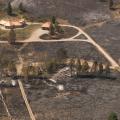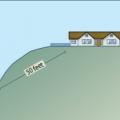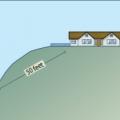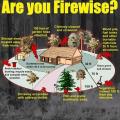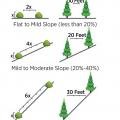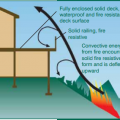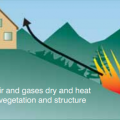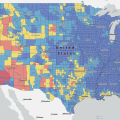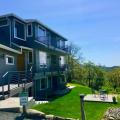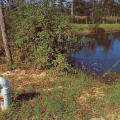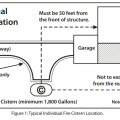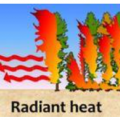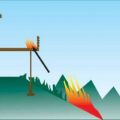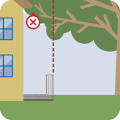Showing results 1 - 24 of 24
A dry hydrant is a pipe a homeowner can have installed in a natural water source on their rural property to provide easy access to the water by firefighting crews.
Create defensible space against wildfires by limiting fire fuels in the immediate, intermediate, and extended zones around the home
Defensible space and ignition resistant building materials saved this home from a wildland fire that destroyed the neighboring home in the foreground
Example of setback from wildland vegetation Image title: Homes sited on hills in wildfire prone areas should be set back at least 50 feet from downslope wildland vegetation.
Homes sited on hills in wildfire prone areas should be set back at least 50 feet from downslope wildland vegetation.
Minimum horizontal clearance between trees and plants on various slopes for wildfire resistance
Recommended tree spacing for wildfire resistance within the three defensible space zones (Source: Preparing Homes for Wildfire
Right – Trimming tree branches a minimum of 10 feet from the house or any attached structures reduces the risk of home ignition.
Right – Trimming tree canopies a minimum of 10 feet from the house reduces the risk of home ignition.
Super-heated air and gases from wildfires will dry and heat the fuel, both vegetation and structures, in the path of the oncoming, uphill-moving fire.
These wildfire-resistant decks have a solid decking surface, metal railings, and the underside timber supports are covered with flame-resistant fiber cement board; also the decking is set back from the vegetated slope.
This above-ground private fire suppression cistern has a hydrant threaded for easy attachment to local fire department hoses.
This dry hydrant was installed by a homeowner living in a rural location to provide firefighters with easy access to this natural water source located on their property.
This home has defensible space around it, with a vegetation-free zone that helped the house survive a surrounding wildfire.
This home survived the Laguna Beach fire of October 1993, which claimed more than 400 neighboring homes, thanks to a fire-resistant tile roof, stucco exterior, stucco-covered boxed eaves and under-decks, double-pane windows and selective landscaping
Typical siting and emergency vehicle turnaround requirements for a private residential cistern for fire protection.
Windblown embers and firebrands are the most common cause of structural fires in wildfires, followed by fires started by radiant heat igniting surfaces or breaking windows and allowing embers in, followed by direct flame contact
Wrong – Conventional wood deck risks ignition from embers falling on the surface or from unmaintained vegetation burning below.
Wrong – Tree branches close to the house are prone to spreading crown fires to the house; the tree should be trimmed so that branches are at least 10 feet back from the red dashed line indicating the deck railing of the house.


